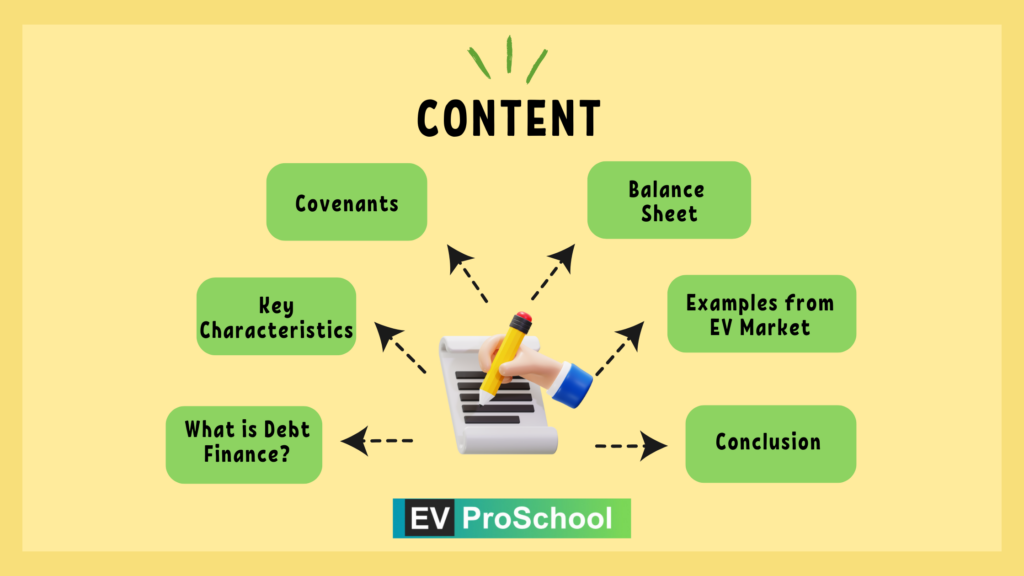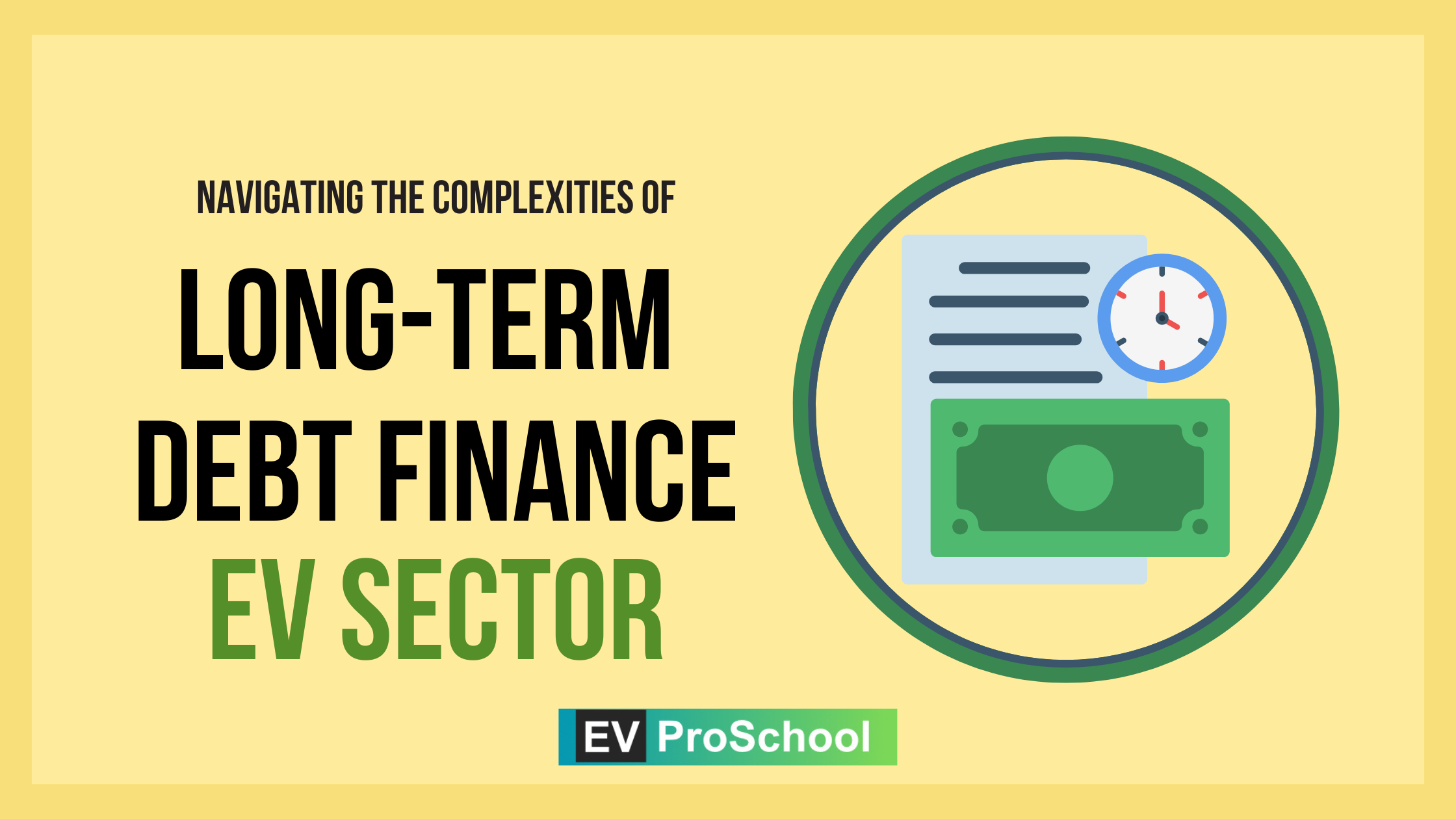As the electric vehicle (EV) sector accelerates, companies are increasingly looking towards long-term debt finance as a means to fuel their growth and expansion. Understanding the intricacies of debt finance is essential for EV companies aiming to navigate this landscape successfully.

What is Debt Finance?
Debt finance involves borrowing funds from external sources, with the promise to repay the principal along with interest over a predetermined period. Unlike equity financing, which trades capital for ownership stakes, debt financing allows companies to retain full ownership while accessing the capital needed for projects like manufacturing facilities, R&D, or expanding charging infrastructure.
Key Characteristics of Debt Finance
- Interest Paid Pre-Tax Profit:
Interest on debt is deductible before taxes, which can reduce the overall tax liability for an EV company. For example, if ‘ElectroMotive’ borrows INR 100 million at an interest rate of 5%, the INR 5 million paid in interest reduces the company’s taxable income, lowering the tax bill and improving cash flow. - Risk Involved with EV Business:
The EV sector, while promising, comes with its share of risks, including technological changes, regulatory shifts, and market adoption rates. Debt finance obligates companies to fixed interest payments, which can be a burden if the business faces downturns or if the EV market’s growth slows unexpectedly. - Issued at a Price Lower than Nominal Value:
Debt securities can be issued at a discount, meaning below their nominal value. This is often done to make the securities more attractive to investors by offering a higher effective yield. For an EV company, issuing bonds at a discount can be a strategic move to attract investment, especially in a competitive market.
Learn more about EV Fianance : Diversifying Finance In The Indian EV Sector: Beyond Traditional Loan
Security Charges
In case of default, lenders often require some form of security or collateral. This can be:
- Fixed Charge: A fixed charge is secured against specific, identifiable assets like property or equipment. For an EV manufacturer, this could mean securing the loan against a factory or assembly line machinery.
- Floating Charge: Unlike fixed charges, floating charges are not tied to particular assets but rather to a pool of assets, like inventory. This provides more flexibility to the borrower but is generally seen as riskier by lenders. However, in the event of liquidation, fixed charges take precedence over floating charges.
Lenders typically prefer fixed charges for their clear, definable security but may accept floating charges for additional flexibility.
Covenants
Loan agreements often include covenants or conditions that the borrower must adhere to, such as:
- Dividend Restrictions: To ensure that the company prioritizes debt repayment, lenders may restrict dividend payments to shareholders.
- Financial Ratios: Ratios like debt-to-equity or interest coverage may be stipulated to maintain financial stability.
- Financial Reports: Regular submission of financial reports to lenders for monitoring purposes.
- Issue of Further Debt: Restrictions on incurring additional debt to ensure the company doesn’t over-leverage.
Conclusion
For EV companies, navigating the complexities of long-term debt finance requires a careful balance between leveraging opportunities for growth and managing the risks associated with debt. By understanding the nuances of debt finance, EV businesses can strategically position themselves for sustainable expansion in the burgeoning electric vehicle market.



